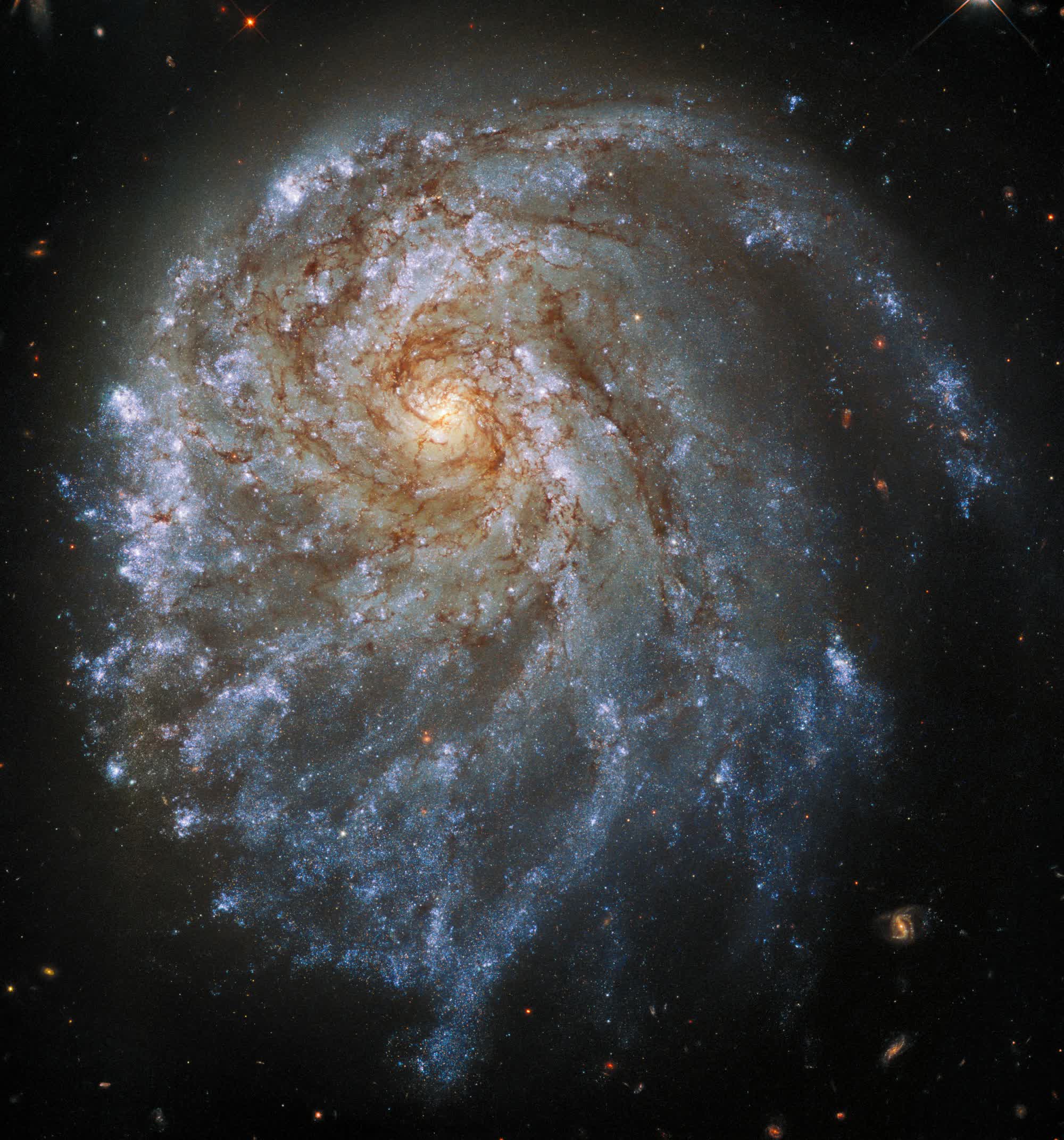In a nutshell: NASA and the European Space Agency have shared a new image of a strange spiral galaxy located approximately 120 million light-years away in the constellation Cepheus. NGC 2276 was first discovered by Friedrich August Theodor Winnecke in 1876 and has fascinated astronomers ever since due to its contorted appearance
As Hubble Site describes it...
The myriad spiral galaxies in our universe almost all look like fried eggs. A central bulge of aging stars is like the egg yolk, surrounded by a disk of stars that are the egg white. The galaxy in this Hubble photo looks like it is sliding off the frying pan. The central bulge is off in one corner relative to the surrounding disk of bright young blue stars.
The galaxy's appearance is believed to be caused by two astrophysical interactions.
Along the upper left edge of the image, you'll notice a bright blue arm of newborn and short-lived stars. It is believed that this region of intense star formation could have been caused by a collision with a dwarf galaxy or the interaction of superheated gas that lies between galaxies in galaxy clusters.
On the opposite side, the gravitational pull from nearby galaxy NGC 2300 is distorting the outermost spiral arm of NGC 2276 and causing the stars to be more spaced out.
This "zoom into" video of NGC 2276 really helps to put into perspective just how far away the galaxy is, and how impossibly massive the observable universe is.
NGC 2276 was notably featured in the Atlas of Peculiar Galaxies from 1966 - once for its unusual spiral arms and again due its relationship with NGC 2300.
